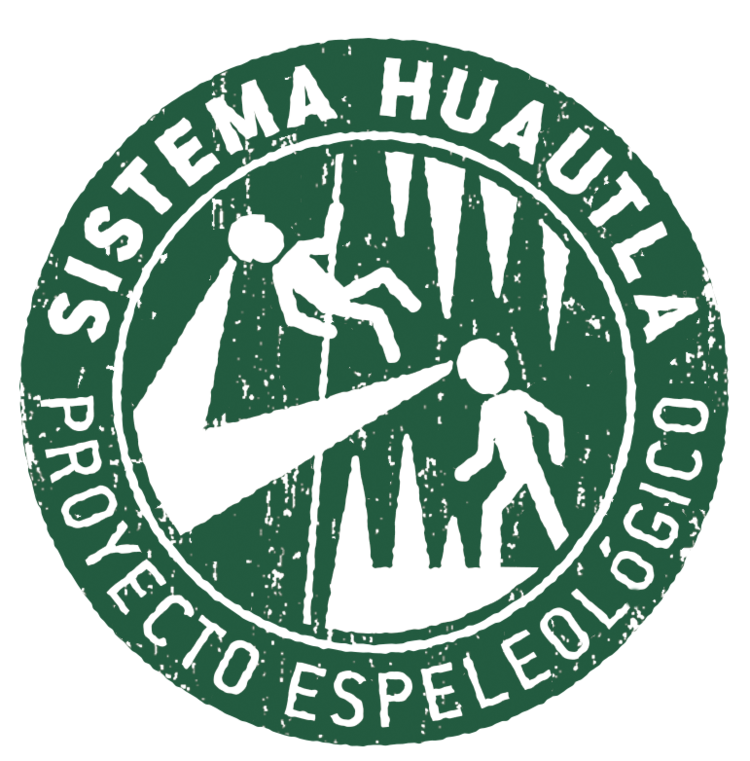Biological exploration during the 2015 Proyecto Espeleológico Sistema Huautla expedition
Words & photos by Jean Krejca
As a cave biologist, just the thought of an eyeless tarantula or depigmented scorpion well within the deepest cave in the hemisphere sends tingles down my arms. These are totally different tingles than those of a non-caver thinking of spiders and scorpions in underground places!
The area of Sistema Huautla is known for at least nine described species of troglobites (Juberthie et al. 2015), including:
Troglobitic tarantula from Church Cave, Hemirrhagus sp.
Dr. Oscar Francke collecting leaf litter species on the surface near Millipede Cave.
Next we proceeded to the other side of the construction site, over the lip of another doline, and down into the real entrance of Cueva Inclinada. Here we spent time rigging and dropping our team down the first two drops (Figures 2 and 3), and collecting Stygnopsis harvestmen and searching for other cave species. After a lunch break in the hot shade, we drove to the Río Iglesia doline to locate and sample in Millipede Cave. This cave is named for the conspicuous blue-green and yellow millipedes in the entrance area (Polydesmida: Rhachodesmidae). The same team entered this cave and proceeded to the back, down a short climb best done with a handline, where we collected harvestmen (Figure 4), spiders, as well as two small pseudoscorpions, a new record for this cave. At the end of the back room is a breakdown pile that Mark excavated on while the rest of us dodged rocks below. A small-person lead remains in this area. While most of us were in the Cave, Oscar collected leaf litter species on the surface nearby.
Large blue-green and yellow Rhachodesmid millipede.
The final collecting trip was to Skull Cave on 16 April with Yvonne and Mark, as well as Victor Ursu, James Brown and me. Here, in addition to photography, Mark, Victor and I removed some bedrock bridges blocking a small, wet crawlway with air. After a notable amount of effort I was able to squeeze past the final restriction we encountered only to get to a slightly larger crawlway where ultimately the ceiling came down even further representing a much greater bedrock removal effort to continue. We collected Stygnopsis harvestmen, millipedes, and a dipluran.
Thanks to Oscar Francke, James Reddell, Mark Minton and Yvonne Droms for being inspirational biologists and cavers, and for reviewing this article.
Literature cited:
Jameson, R., and P. Mothes. 1982. Caves of the San Miguel Doline. AMCS Activities Newsletter No. 12. Pp. 37-42.
Author, Jean Krejca admires needles of selenite in an Arizona cave. Photo by Steve Eginoire
Juberthie, C., J. Palacios-Vargas, and J. Reddell. 2015. Mexico. Encyclopaedia Biospeologia, vol. IIa/Mundos Subterraneos, 25-26:1-101
Troglobite species.
While this list represents impressive collecting efforts by cavers dating back to the early days of exploration in the Sistema Huautla area, without a doubt it underrepresents the true biological diversity of caves in this region. During the 2015 Proyecto Espeleológico Sistema Huautla expedition, I had the fortune of working with Dr. Oscar Francke, Rodrigo Monjaraz, Jorge Mendoza, and Gerardo Contreras as they continue their work documenting the diversity of cave fauna, particularly arachnids, in the region.
My first collecting efforts in the area were in La Grieta, via the Hobbit Hole entrance. In the room below the historic La Grieta entrance the team including Steph Davlantes, Gilly Elor, Kasia Biernacka, Matt Tomlinson, James Brown and me, paused on the way in to collect tarantulas and other spiders. Later during the five day camp (8-12 April), James and I collected a thysanuran, possibly Anelpistina, a Stygnopsis harvestman, and a small spider during a re-survey near Camp 1.5.
After getting out of the La Grieta camp, on 14 April I was able to join the team of cave biologists including Oscar, Rodrigo, Jorge and Gerardo, with Mark Minton and Yvonne Droms, in search of Cueva Inclinada. We first located a small cave at the downstream end of a construction area that is soon to be a soccer field. Mark descended a short handline from a stone wall that was built to shore up the bottom of the doline to make it level. After less than 50 meters, this cave ended as the mud floor came up to the downward slanting ceiling. This cave to is in the correct location to be Sótano del Agua, however if it is, the end of the cave is now filled in (Jameson and Mothes 1982).
Rodrigo Monjaraz collecting Stygnopsis harvestman from Millipede Cave
Dipluran.
Stygnopsis harvestman.
Gerardo Contreras (pictured left, yellow helmet) Jorge Mendoza (on right, blue helmet) descending in Cueva Inclinada.







